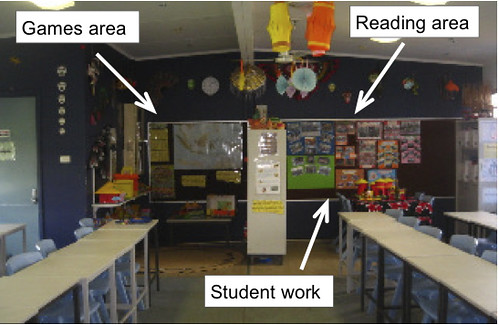OTAN News
Better Understanding Personalized Learning
 "Classroom layout" by Penny Coutas is licensed under CC BY-NC-SA 2.0
"Classroom layout" by Penny Coutas is licensed under CC BY-NC-SA 2.0
One of the advantages of technology is that it can be used to personalize a student’s learning, providing resources and activities that are tailored to a student’s needs and that supplement what a student is learning with other students through whole-group instruction. Along with the idea of personalized learning (PL), however, come myths and half-truths that need to be addressed for teachers to better understand what personalized learning is.
In her article Mythbusters: Breaking Down 10 Common Misconceptions of Personalized Learning, Jill Thompson worked with teachers in a Minnesota school district to address PL myths head on after working to implement PL across their district for a few years. Here are some of their findings that counter these myths after integrating PL into their practice:
-
There is only one right way to do PL – PL is flexible in this regard. Teachers need to understand that there are different ways to organize PL and different entry points.
-
You have to build a unique playlist or pathway for each student, PL means that all students are doing different things, and PL means that students choose whatever they want to learn – The starting point for all students are the curriculum, standards, and assessments, and personalization should emanate from this point. One task or activity, for example, could be made available for multiple students, rather than finding a unique task or activity for each student. Also, there doesn’t have to be an endless number of choices for students – choosing among two or three items is still a choice.
-
Every student is working on a computer and there is no direct instruction, and PL means that there is no more whole-group direct instruction – One of the most exciting things about PL for teachers from an instructional point of view is that it gives a teacher the chance to work more with students one-on-one and with small groups, because students, sometimes with technology, can be set onto PL tasks that don’t require the teacher’s presence. Direct instruction is still an option, but it doesn’t have to be the only way of teaching or even the majority of teaching. Use it when it makes the most sense, either with the whole class or a small group.
-
PL means that I have to change everything I’m doing, and PL is more work and is overwhelming – You probably are already doing elements of PL in your classroom. Now, you are working to organize PL in a more thorough way, and in small steps to move towards a more student-centered classroom.
If you are looking for ideas on how to provide more personalized learning using technology, contact us at support@otan.us or call our office at 916-228-2580. We’re here to help!
Article: Mythbusters: Breaking Down 10 Common Misconceptions of Personalized Learning from Jill Thompson at Education Elements
OTAN Article: Personalized Learning: The Latest Fad or Here to Stay?
OTAN Article: Different Ways that Students Can Demonstrate Learning

